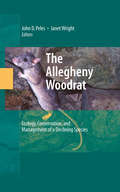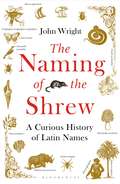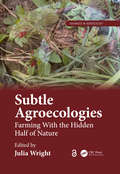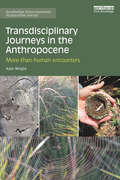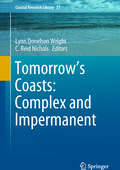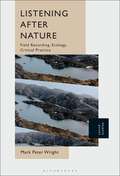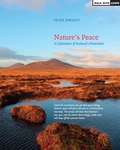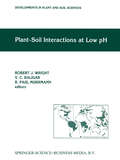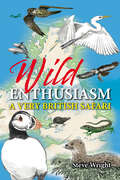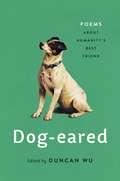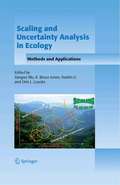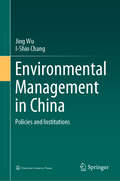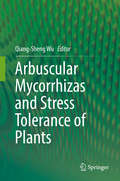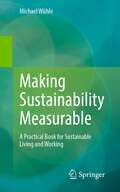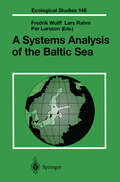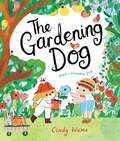- Table View
- List View
The Allegheny Woodrat: Ecology, Conservation, and Management of a Declining Species
by Janet Wright John D. PelesA decline in populations of Allegheny woodrats (Neotoma magister) was first noticed in the 1980s. Since that time, woodrats have become extirpated from at least two states and have declined dramatically in several others. Recent evidence suggests that the decline of this species may be proceeding further south to include states where woodrat populations were previously considered to be stable. The Allegheny Woodrat: Ecology, Conservation, and Management of a Declining Species provides a comprehensive summary of research conducted over the past twenty-five years. The book integrates the results of this research into a comprehensive picture of the ecological requirements, conservation principles, and management strategies for this declining species. In addition, general principles learned from the study of woodrats are applied to the conservation and management of other declining species, including other species of Neotoma. The editors and chapter authors are researchers from both academic settings and state management agencies, individuals who have contributed significantly to the study of Allegheny woodrats during the past two decades. The book will be of interest to ecologists, conservation biologists, wildlife professionals, and students.
The Naming of the Shrew: A Curious History of Latin Names
by John WrightLatin names – frequently unpronounceable, all too often wrong and always a tiny puzzle to unravel – have been annoying the layman since they first became formalised as scientific terms in the eighteenth century. Why on earth has the entirely land-loving Eastern Mole been named Scalopus aquaticus, or the Oxford Ragwort been called Senecio squalidus – 'dirty old man'? What were naturalists thinking when they called a beetle Agra katewinsletae, a genus of fish Batman, and a Trilobite Han solo? Why is zoology replete with names such as Chloris chloris chloris (the greenfinch), and Gorilla gorilla gorilla (a species of, well gorilla)?The Naming of the Shrew will unveil these mysteries, exploring the history, celebrating their poetic nature and revealing how naturalists sometimes get things so terribly wrong. With wonderfully witty style and captivating narrative, this book will make you see Latin names in a whole new light.
Subtle Agroecologies: Farming With the Hidden Half of Nature (Advances in Agroecology)
by Julia WrightThis book is about the invisible or subtle nature of food and farming, and also about the nature of existence. Everything that we know (and do not know) about the physical world has a subtle counterpart which has been scarcely considered in modernist farming practice and research. If you think this book isn’t for you, if it appears more important to attend to the pressing physical challenges the world is facing before having the luxury of turning to such subtleties, then think again. For it could be precisely this worldview – the one prioritises the physical-material dimension of reality - that helped get us into this situation in the first place. Perhaps we need a different worldview to get us out? This book makes a foundational contribution to the discipline of Subtle Agroecologies, a nexus of indigenous epistemologies, multidisciplinary advances in wave-based and ethereal studies, and the science of sustainable agriculture. Not a farming system in itself, Subtle Agroecologies superimposes a non-material dimension upon existing, materially-based agroecological farming systems. Bringing together 43 authors from 12 countries and five continents, from the natural and social sciences as well as the arts and humanities, this multi-contributed book introduces the discipline, explaining its relevance and potential contribution to the field of Agroecology. Research into Subtle Agroecologies may be described as the systematic study of the nature of the invisible world as it relates to the practice of agriculture, and to do this through adapting and innovating with research methods, in particular with those of a more embodied nature, with the overall purpose of bringing and maintaining balance and harmony. Such research is an open-minded inquiry, its grounding being the lived experiences of humans working on, and with, the land over several thousand years to the present. By reclaiming and reinterpreting the perennial relationship between humans and nature, the implications would revolutionise agriculture, heralding a new wave of more sustainable farming techniques, changing our whole relationship with nature to one of real collaboration rather than control, and ultimately transforming ourselves.
Subtle Agroecologies: Farming With the Hidden Half of Nature (Advances in Agroecology)
by Julia Wright Nicholas ParrottThis book is about the invisible or subtle nature of food and farming, and also about the nature of existence. Everything that we know (and do not know) about the physical world has a subtle counterpart which has been scarcely considered in modernist farming practice and research. If you think this book isn’t for you, if it appears more important to attend to the pressing physical challenges the world is facing before having the luxury of turning to such subtleties, then think again. For it could be precisely this worldview – the one prioritises the physical-material dimension of reality - that helped get us into this situation in the first place. Perhaps we need a different worldview to get us out? This book makes a foundational contribution to the discipline of Subtle Agroecologies, a nexus of indigenous epistemologies, multidisciplinary advances in wave-based and ethereal studies, and the science of sustainable agriculture. Not a farming system in itself, Subtle Agroecologies superimposes a non-material dimension upon existing, materially-based agroecological farming systems. Bringing together 43 authors from 12 countries and five continents, from the natural and social sciences as well as the arts and humanities, this multi-contributed book introduces the discipline, explaining its relevance and potential contribution to the field of Agroecology. Research into Subtle Agroecologies may be described as the systematic study of the nature of the invisible world as it relates to the practice of agriculture, and to do this through adapting and innovating with research methods, in particular with those of a more embodied nature, with the overall purpose of bringing and maintaining balance and harmony. Such research is an open-minded inquiry, its grounding being the lived experiences of humans working on, and with, the land over several thousand years to the present. By reclaiming and reinterpreting the perennial relationship between humans and nature, the implications would revolutionise agriculture, heralding a new wave of more sustainable farming techniques, changing our whole relationship with nature to one of real collaboration rather than control, and ultimately transforming ourselves.
Transdisciplinary Journeys in the Anthropocene: More-than-human encounters (Routledge Environmental Humanities)
by Kate WrightTransdisciplinary Journeys in the Anthropocene offers a new perspective on international environmental scholarship, focusing on the emotional and affective connections between human and nonhuman lives to reveal fresh connections between global issues of climate change, species extinction and colonisation. Combining the rhythm of road travel, interviews with local Aboriginal Elders, and autobiographical storytelling, the book develops a new form of nature writing informed by concepts from posthumanism and the environmental humanities. It also highlights connections between the studied area and the global environment, drawing conceptual links between the auto-ethnographic accounts and international issues. This book will be of great interest to scholars and postgraduates in environmental philosophy, cultural studies, postcolonial theory, Australian studies, anthropology, literary and place studies, ecocriticism, history and animal studies. Transdisciplinary Journeys in the Anthropocene may also be beneficial to studies in nature writing, ecocriticism, environmental literature, postcolonial studies and Australian studies.
Transdisciplinary Journeys in the Anthropocene: More-than-human encounters (Routledge Environmental Humanities)
by Kate WrightTransdisciplinary Journeys in the Anthropocene offers a new perspective on international environmental scholarship, focusing on the emotional and affective connections between human and nonhuman lives to reveal fresh connections between global issues of climate change, species extinction and colonisation. Combining the rhythm of road travel, interviews with local Aboriginal Elders, and autobiographical storytelling, the book develops a new form of nature writing informed by concepts from posthumanism and the environmental humanities. It also highlights connections between the studied area and the global environment, drawing conceptual links between the auto-ethnographic accounts and international issues. This book will be of great interest to scholars and postgraduates in environmental philosophy, cultural studies, postcolonial theory, Australian studies, anthropology, literary and place studies, ecocriticism, history and animal studies. Transdisciplinary Journeys in the Anthropocene may also be beneficial to studies in nature writing, ecocriticism, environmental literature, postcolonial studies and Australian studies.
The Routledge Handbook of Vegan Studies (Routledge International Handbooks)
by Laura WrightThis wide-ranging volume explores the tension between the dietary practice of veganism and the manifestation, construction, and representation of a vegan identity in today’s society. Emerging in the early 21st century, vegan studies is distinct from more familiar conceptions of "animal studies," an umbrella term for a three-pronged field that gained prominence in the late 1990s and early 2000s, consisting of critical animal studies, human animal studies, and posthumanism. While veganism is a consideration of these modes of inquiry, it is a decidedly different entity, an ethical delineator that for many scholars marks a complicated boundary between theoretical pursuit and lived experience. The Routledge Handbook of Vegan Studies is the must-have reference for the important topics, problems, and key debates in the subject area and is the first of its kind. Comprising over 30 chapters by a team of international contributors, this handbook is divided into five parts: History of vegan studies Vegan studies in the disciplines Theoretical intersections Contemporary media entanglements Veganism around the world These sections contextualize veganism beyond its status as a dietary choice, situating veganism within broader social, ethical, legal, theoretical, and artistic discourses. This book will be essential reading for students and researchers of vegan studies, animal studies, and environmental ethics.
The Routledge Handbook of Vegan Studies (Routledge International Handbooks)
by Laura WrightThis wide-ranging volume explores the tension between the dietary practice of veganism and the manifestation, construction, and representation of a vegan identity in today’s society. Emerging in the early 21st century, vegan studies is distinct from more familiar conceptions of "animal studies," an umbrella term for a three-pronged field that gained prominence in the late 1990s and early 2000s, consisting of critical animal studies, human animal studies, and posthumanism. While veganism is a consideration of these modes of inquiry, it is a decidedly different entity, an ethical delineator that for many scholars marks a complicated boundary between theoretical pursuit and lived experience. The Routledge Handbook of Vegan Studies is the must-have reference for the important topics, problems, and key debates in the subject area and is the first of its kind. Comprising over 30 chapters by a team of international contributors, this handbook is divided into five parts: History of vegan studies Vegan studies in the disciplines Theoretical intersections Contemporary media entanglements Veganism around the world These sections contextualize veganism beyond its status as a dietary choice, situating veganism within broader social, ethical, legal, theoretical, and artistic discourses. This book will be essential reading for students and researchers of vegan studies, animal studies, and environmental ethics.
Tomorrow's Coasts: Complex and Impermanent (Coastal Research Library #27)
by Lynn Donelson Wright C. Reid NicholsThis book is intended as a conceptual roadmap to show how some of the numerous pieces of complex coastal systems intersect and might interact under changing future environmental regimes. It is addressed to a non-technical but environmentally literate audience that includes the lay public, policy makers, planners, engineers and academics interested in the causes and consequences of global changes as they are likely to affect coastal systems. The book also outlines some strategies for anticipating and responding to the challenges that lie ahead. The purpose is not to offer a technical treatise on how to build better numerical models or to provide the cognoscenti with new scientific details or theories. Quite on the contrary the authors aim to provide a holistic, easy-accessible overview of coastal systems and therefore use a writing style that is non-technical, nonmathematical and non-jargonized throughout. Wherever scientific terms are required to avoid ambiguity, a clear and simple definition is presented and those definitions are repeated in the glossary. The authors aim to communicate with all who care about the future of coastal environments. In Part 1, they present some underlying general “big picture” concepts that are applicable to coastal processes and coastal change worldwide. Part 2 reviews some of the more important physical, ecological and societal causes and outcomes of coastal change. A selection of case studies of some prominent and highly vulnerable coastal regions is presented in Part 3. Some strategies for facilitating and supporting collaboration among the global scientific community to enhance future coastal resilience are outlined in Part 4.
Listening After Nature: Field Recording, Ecology, Critical Practice
by Mark Peter WrightListening After Nature examines the constructions and erasures that haunt field recording practice and discourse. Analyzing archival and contemporary soundworks through a combination of post-colonial, ecological and sound studies scholarship, Mark Peter Wright recodes the Field; troubles conceptions of Nature; expands site-specificity; and unearths hidden technocultures. What exists beyond the signal? How is agency performed and negotiated between humans and nonhumans? What exactly is a field recording and what are its pedagogical potentials? These questions are operated by a methodology of listening that incorporates the spaces of audition, as well as Wright's own practice-based reflections. In doing so, Listening After Nature posits a range of novel interventions. One example is the “Noisy-Nonself,” a conceptual figuration with which to comprehend the presence of reticent recordists. “Contact Zones and Elsewhere Fields” offers another unique contribution by reimaging the relationship between the field and studio. In the final chapter, Wright explores the microphone by tracing its critical and creative connections to natural resource extraction and contemporary practice. Listening After Nature auditions water and waste, infrastructures and animals, technologies and recordists, data and stars. It grapples with the thresholds of sensory perception and anchors itself to the question: what am I not hearing? In doing so, it challenges Western universalisms that code the field whilst offering vibrant practice-based possibilities.
Listening After Nature: Field Recording, Ecology, Critical Practice
by Mark Peter WrightListening After Nature examines the constructions and erasures that haunt field recording practice and discourse. Analyzing archival and contemporary soundworks through a combination of post-colonial, ecological and sound studies scholarship, Mark Peter Wright recodes the Field; troubles conceptions of Nature; expands site-specificity; and unearths hidden technocultures. What exists beyond the signal? How is agency performed and negotiated between humans and nonhumans? What exactly is a field recording and what are its pedagogical potentials? These questions are operated by a methodology of listening that incorporates the spaces of audition, as well as Wright's own practice-based reflections. In doing so, Listening After Nature posits a range of novel interventions. One example is the “Noisy-Nonself,” a conceptual figuration with which to comprehend the presence of reticent recordists. “Contact Zones and Elsewhere Fields” offers another unique contribution by reimaging the relationship between the field and studio. In the final chapter, Wright explores the microphone by tracing its critical and creative connections to natural resource extraction and contemporary practice. Listening After Nature auditions water and waste, infrastructures and animals, technologies and recordists, data and stars. It grapples with the thresholds of sensory perception and anchors itself to the question: what am I not hearing? In doing so, it challenges Western universalisms that code the field whilst offering vibrant practice-based possibilities.
Nature's Peace: A Celebration of Scotland's Watershed (Ribbon of Wildness #3)
by Peter WrightIn 2005 Peter Wright walked the 1,200 km length of the Watershed in 64 days. Walking along the very spine of Scotland he was struck by the magnificence and diversity of the landscapes which his original and little publicised route exposed him to. Nature's Peace celebrates these landscapes as never before through stunning photographs, taking the reader on an imaginary journey from the English border in the south to the Shetland Isles and Unst at the very northern tip of Britain. Wright brings his journey to life with vivid descriptions of the land's history and discussions about its future.
Plant-Soil Interactions at Low pH: Proceedings of the Second International Symposium on Plant-Soil Interactions at Low pH, 24–29 June 1990, Beckley West Virginia, USA (Developments in Plant and Soil Sciences #45)
by Robert J. Wright V. C. Baligar R. Paul MurrmannSoil acidity is a major limitation to crop production in many parts of the world. Plant growth inhibition results from a combination of factors, including aluminum, manganese, and hydrogen ion toxicities and deficiencies of essential elements, particularly calcium, magnesium, phosphorus, and molybdenum. Agricultural management practices and acid precipitation have increased acid inputs into the ecosystem and heightened concern about soil acidity problems. While application of lime has proved to be effective in ameliorating surface soil acidity in many areas, significant soil acidity problems still exist. Scientists from Alberta, Canada, recognized the need to provide a forum for researchers from different disciplines to exchange information and ideas on solving problems of plant growth in acid soils. As a result of their efforts, the First International Symposium on Plant-Soil Interactions at Low pH was held at Grande Prairie, Alberta, Canada, in July 1987. In many acid soil areas, liming materials are not readily available, the cost may be prohibitive, or subsoil acidity cannot be corrected by surface application of lime. New management approaches involving both the plant and the soil are needed in these situations. Progress has been made in the selection and breeding of acid-tolerant plants. However, continued progress will be limited by our lack of understanding of the physiological and biochemical basis of differential acidity tolerance among plants.
Wild Enthusiasm: A Very British Safari
by Steve WrightNo need to travel halfway round the globe to spot iconic wildlife – it's right here on our doorstep in the UK and Steve Wright, keen amateur naturalist, travels from the Isle of Man to Norfolk, to the Orkneys, Northern Ireland and everywhere in-between on his various short holiday expeditions, clutching his specific wildlife wish-list for each trip. The result is an inspiring and engaging diary of his personal encounters with white-tailed eagles, otters, bottlenose dolphins, fulmars, puffins, osprey, sand lizards, even red-necked wallabies. And the characters he meets on the way. He hears snipe drumming, watches a shrew in Wales, admires pilot whales off Lewis. Steve's wildlife travel diaries give excellent practical tips, such as bird-hide etiquette, how to identify birds on the wing, how to consult local wildlife rangers about what might be spotted on each outing and where to find that species. But most importantly his highly-readable wildlife travels are a call to others to book themselves in to pubs and small hotels the length and breadth of Britain and follow his example, for a series of fun British wildlife safaris.
Dog-eared: Poems About Humanity's Best Friend
by Duncan WuFrom Homer to Wordsworth to Gwendolyn Brooks, learn about history's greatest writers and the furry best friends that inspired them.Dogs are at once among the most ordinary of animals and the most beloved by mankind. But what we may not realize is that for as long as we have loved dogs, our poets have been seriously engaged with them as well.In this collection, English professor Duncan Wu digs into the wealth of poetry about our furry friends to show how varied and intimate our relationships with them have been over the centuries. Homer recounts how Odysseus's loyal dog recognizes his master even after his long absence. Thomas Hardy wrote poems from a pooch's perspective, conveying a powerful sense of dogs' innocent and trusting nature. And a multitude of writers, from Lord Byron to Emily Dickinson, have turned to poetry to mourn the loss of beloved dogs. Rich and inviting, Dog-eared is a spellbinding collection of poetic musings about humans and dogs and what they mean to each other.
Scaling and Uncertainty Analysis in Ecology: Methods and Applications
by Jianguo Wu K. Bruce Jones Harbin Li Orie L. LoucksThis is the first book of its kind – explicitly considering uncertainty and error analysis as an integral part of scaling. The book draws together a series of important case studies to provide a comprehensive review and synthesis of the most recent concepts, theories and methods in scaling and uncertainty analysis. It includes case studies illustrating how scaling and uncertainty analysis are being conducted in ecology and environmental science.
Environmental Management in China: Policies and Institutions
by Jing Wu I-Shin ChangThis book details various stages in the introduction, establishment and evolution of China’s environmental management system. By combining a literature review, comparative analysis, and case study, it investigates the environmental management system in several key periods in order to systematically assess the necessary measures and appropriate adjustments the Chinese Government implemented to reconcile the growing conflicts between economic development and resources conservation, in the context of rapid economic growth and economic transformation. Given its scope, the book offers a valuable resource for experts, scholars, and government officials in related fields.
Hydro-mechanical Analysis of Rainfall-Induced Landslides
by Lizhou Wu Runqiu Huang Xu LiMost landslides are triggered by rainfall. In previous studies, slope stability is often evaluated based on the infiltration analysis. Hydro-mechanical coupling is significant to rainfall-caused landslide evolution. This book covers theoretical models of unsaturated infiltration, and provides hydro-mechanical models for rainfall-induced landslides. The influences of rainfall patterns, boundary conditions, layered structures, and SWCC hysteresis on the coupled unsaturated infiltration and deformation are discussed. Laboratory testing of rainfall-induced landslides is performed to study the developing process of landslide upon rainfall infiltration. The results provide a better understanding of rainfall-induced landslides.
Arbuscular Mycorrhizas and Stress Tolerance of Plants
by Qiang-Sheng WuThis book reviews the potential mechanisms in arbuscular mycorrhizas (AMs), in the hope that this can help arbuscular mycorrhizal fungi (AMF) to be more used efficiently as a biostimulant to enhance stress tolerance in the host plants. AMF, as well as plants, are often exposed to all or many of the abiotic and biotic stresses, including extreme temperatures, pH, drought, water-logging, toxic metals and soil pathogens. Studies have indicated a quick response to these stresses involving several mechanisms, such as root morphological modification, reactive oxygen species change, osmotic adjustment, direct absorption of water by extraradical hyphae, up-regulated expression of relevant stressed genes, glomalin-related soil protein release, etc. The underlying complex, multi-dimensional strategy is involved in morphological, physiological, biochemical, and molecular processes. The AMF responses are often associated with homeostatic regulation of the internal and external environment, and are therefore critical for plant health, survival and restoration in native ecosystems and good soil structure.
Making Sustainability Measurable: A Practical Book for Sustainable Living and Working
by Michael WühleMaking something measurable means being able to control it Sustainability is a term with a wealth of meanings and many possible misinterpretations. Yet sustainability can be a powerful and effective tool to guide our practical actions and simplify complicated decisions. Sustainability can save costs and stabilize any organization and company. It protects the climate and the environment and leads all people into a good future. The non-fiction book "Making Sustainability Measurable" is a practical guide on how methods and instruments of sustainability can be used successfully - be it in professional life or in private and voluntary engagement. The book not only provides the interested layperson with a comprehensive overview of the central aspects of sustainability management, it also offers practitioners important decision-making aids and tips for implementation. The easy-to-understand style conveys all the essential contents of the topic of sustainability even to newcomers. Whether you have previous knowledge or not - with the many immediately implementable "best practices", the book offers a lot of practical application possibilities. The appendices contain unrestricted tools from the author's practice for the introduction of successful sustainability management.
Nachhaltigkeit – einfach praktisch!: Oh je, Herr Carlowitz
by Michael WühleWas bedeutet Nachhaltigkeit für Sie? Nachhaltigkeit ist nicht nur ein Begriff mit einer Fülle von Bedeutungen und vielen möglichen Missdeutungen. Nachhaltigkeit kann auch ein effektives Werkzeug sein, um unser praktisches Handeln zu leiten und komplizierte Entscheidungen zu vereinfachen. Mit Nachhaltigkeit lassen sich Kosten sparen und jede Organisation sowie jedes Unternehmen stabilisieren. Sie schont das Klima und die Umwelt und führt alle Menschen in eine gute Zukunft. Das Sachbuch „Nachhaltigkeit – einfach praktisch!“ ist ein Leitfaden für Menschen, die vor nachhaltigen Entscheidungen stehen und die Zukunft aktiv mitgestalten wollen – sei es im beruflichen Leben oder im privaten und ehrenamtlichen Engagement.Das Buch verschafft nicht nur dem interessierten Laien eine umfassende Übersicht über die zentralen Aspekte des Nachhaltigkeitsmanagements, es bietet auch dem Praktiker wichtige Entscheidungshilfen für ein verstärktes Engagement.
Nachhaltigkeit messbar machen: Ein Praxisbuch für nachhaltiges Leben und Arbeiten
by Michael WühleEtwas messbar zu machen, bedeutet es steuern zu könnenNachhaltigkeit ist ein Begriff mit einer Fülle von Bedeutungen und vielen möglichen Missdeutungen. Dabei kann Nachhaltigkeit ein mächtiges und effektives Werkzeug sein, um unser praktisches Handeln zu leiten und komplizierte Entscheidungen zu vereinfachen.Mit Nachhaltigkeit lassen sich Kosten sparen und jede Organisation sowie jedes Unternehmen stabilisieren. Sie schont das Klima und die Umwelt und führt alle Menschen in eine gute Zukunft.Das Sachbuch „Nachhaltigkeit messbar machen“ ist ein praxisnaher Leitfaden, wie Methoden und Instrumente der Nachhaltigkeit erfolgreich eingesetzt werden können – sei es im beruflichen Leben oder im privaten und ehrenamtlichen Engagement.Das Buch verschafft nicht nur dem interessierten Laien eine umfassende Übersicht über die zentralen Aspekte des Nachhaltigkeitsmanagements, es bietet auch dem Praktiker wichtige Entscheidungshilfen und Tipps zur Umsetzung. Der leicht verständliche Stil vermittelt auch Neueinsteigern alle wesentlichen Inhalte der Thematik der Nachhaltigkeit. Ob Vorkenntnisse oder nicht - mit den vielen sofort umsetzbaren „Best-Practices“ bietet das Buch eine Menge praktische Anwendungsmöglichkeiten. Die Anhänge enthalten uneingeschränkt nutzbare Tools aus der Praxis des Autors für die Einführung eines erfolgreichen Nachhaltigkeitsmanagements.
Die Gestaltung der Ewigkeit: Die konstitutive Bedeutung von Nichtwissen für den Entsorgungsprozess nuklearen Abfalls (Energiepolitik und Klimaschutz. Energy Policy and Climate Protection)
by Nele WulfWo werden Menschen in 1.000 Jahren sein, wo in 100.000 oder in einer Million Jahre? Fragen, die sonst vorrangig den Ausgangspunkt von Science-Fiction-Literatur bilden, stellen die Gestaltungszeiträume dar, mit denen man sich konfrontiert sieht, wenn das Thema Atommüll diskutiert wird. Bis zu einer Million Jahre soll der Müll sicher von der Umwelt abgeschirmt werden. Im Entsorgungsproblem findet sich das für die Spätmoderne charakteristische Auseinandertreten von Erfahrung und Erwartung wie in kaum einer anderen gesellschaftlichen Herausforderung repräsentiert. Wir haben keine Erfahrungswerte für dieses Unterfangen. Nichtsdestotrotz muss entschieden werden, da auch eine Nicht-Entscheidung nicht von Handlungskonsequenzen entbindet. Die vorliegende Arbeit macht es sich zur Aufgabe zu zeigen, wie nicht nur Entscheidungen trotz Nichtwissens, sondern gerade unter Zugriff auf Nichtwissen ermöglicht werden. Diese wissenssoziologische Betrachtung vollzieht sich anhand des Blicks auf den schwedischen Entsorgungsprozess seit den 1970ern.
A Systems Analysis of the Baltic Sea (Ecological Studies #148)
by F. V. Wulff L. A. Rahm P. LarssonDuring recent decades, large-scale effects of pollution on marine estuaries and even entire enclosed coastal seas have become apparent. One of the first regions where this was observed is the Baltic Sea, whereby the appearance of anoxic deep basins, extensive algal blooms and elimination of top predators like eagles and seals indicated effects of both increased nutrient inputs and toxic substances.This book describes the physical, biochemical and ecological processes that govern inputs, distribution and ecological effects of nutrients and toxic substances in the Baltic Sea. Extensive reviews are supplemented by budgets and dynamic simulation models.This book is highly interdisciplinary and uses a systems approach for analyzing and describing a marine ecosystem. It gives an overview of the Baltic Sea, but is useful for any marine scientist studying large marine ecosystems.
The Gardening Dog
by Cindy WumeMeet two very special friends in this heartwarming and beautifully illustrated tale. Watch as a boy and a dog who don't quite fit in learn that a friendship, like a garden, takes time to grow - but that both are always worth the wait.The Gardening Dog is never chosen to go home with anyone who visits the rescue centre where she lives. Instead she spends her time quietly growing beautiful plants. Then one day she meets a boy called Lewis, who much prefers drawing to running around with all the other children. Working together, Lewis and The Gardening Dog create a wonderful community garden for everyone to share – and as new shoots grow outside, they build a deep friendship that leads to a new start for them both.
